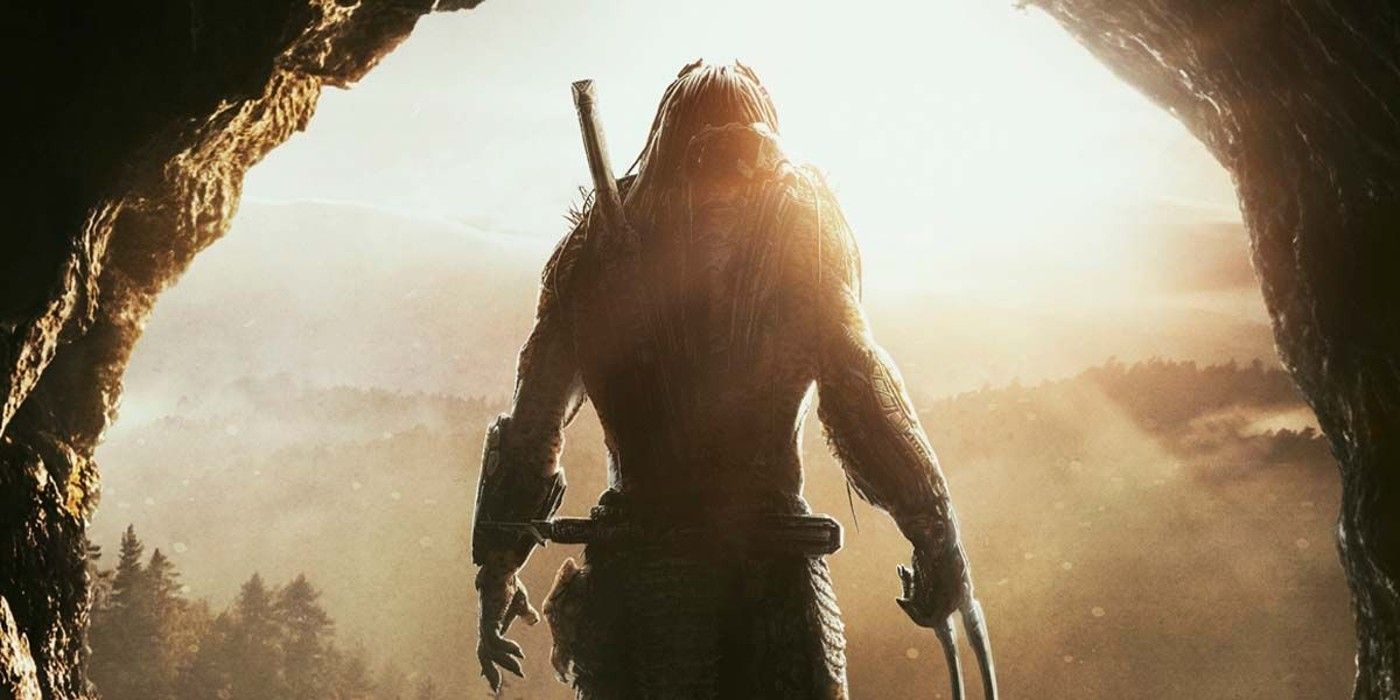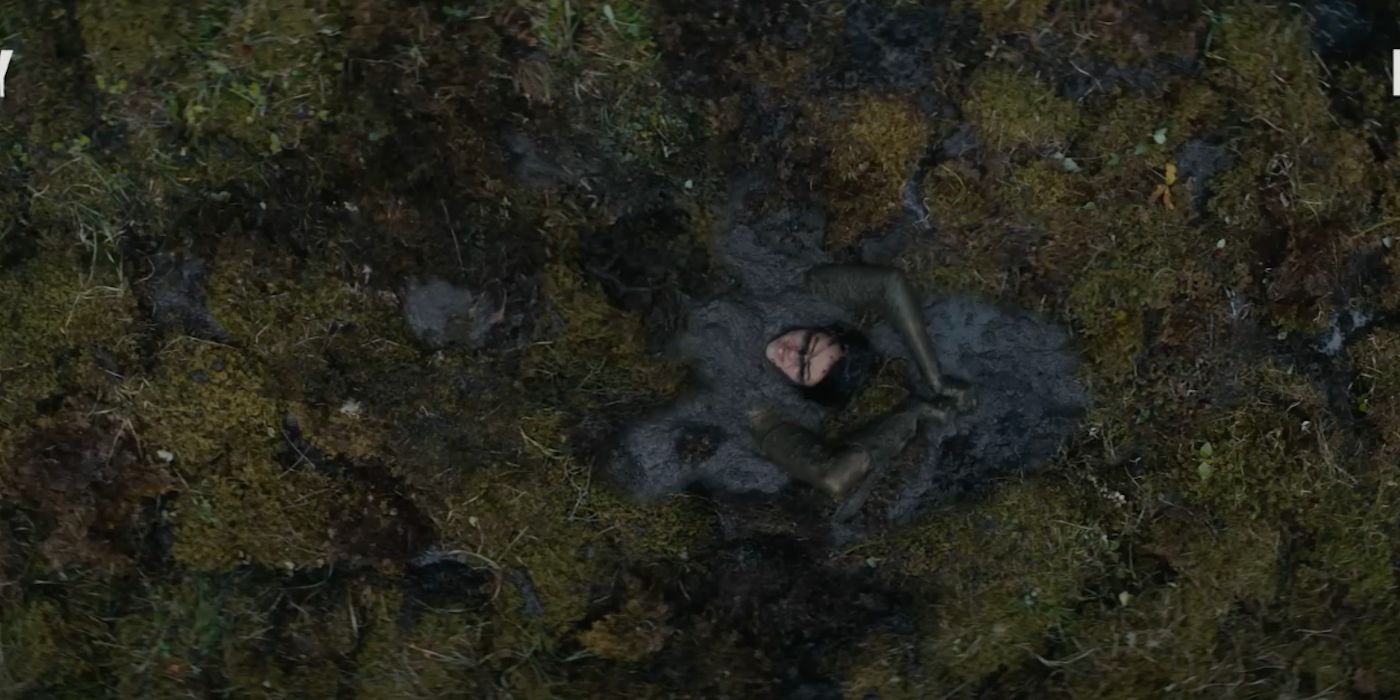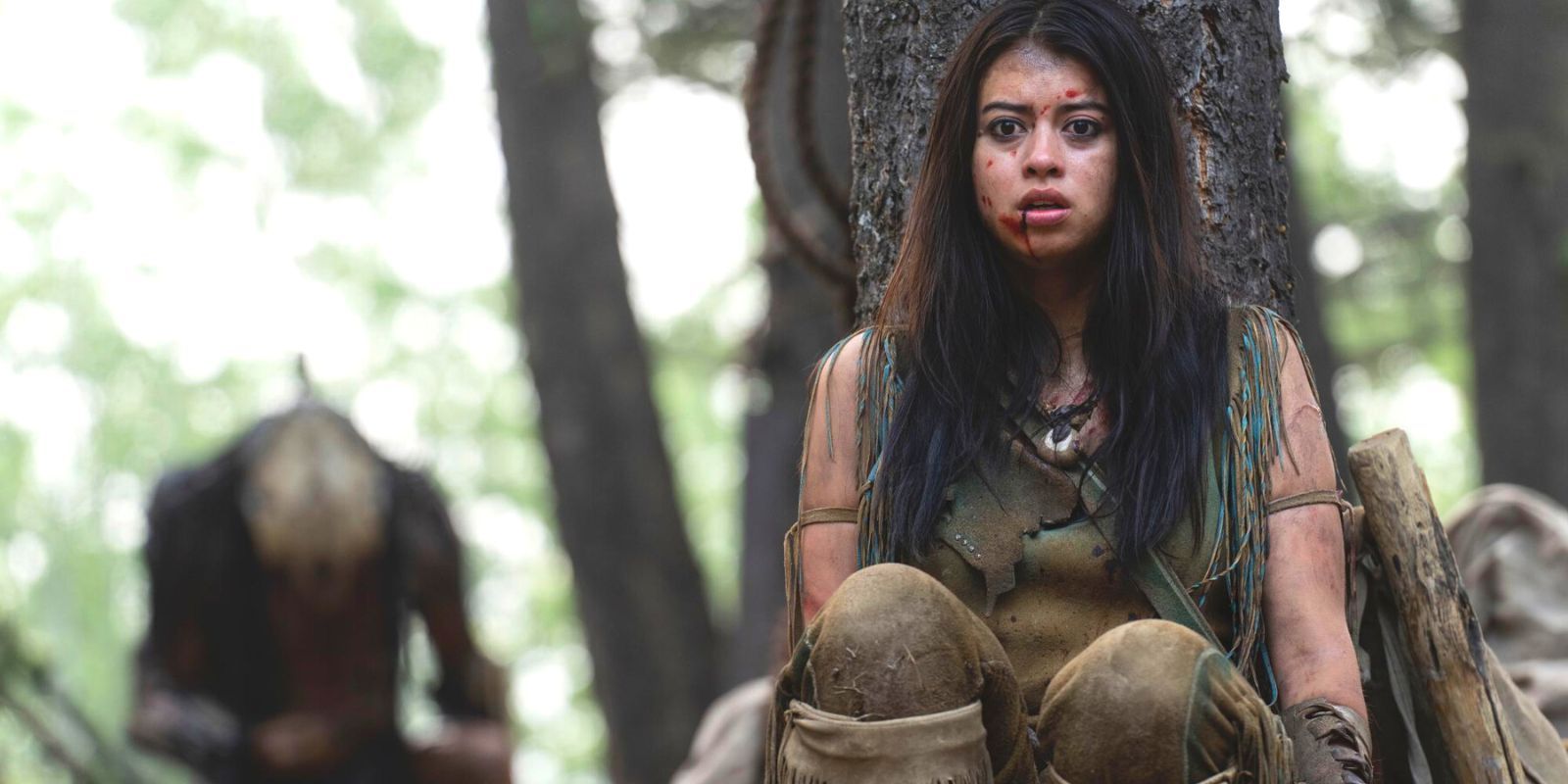The following contains spoilers for Prey, currently streaming on Hulu.
The Predator franchise faces a perennial dilemma when it comes to the titular aliens' greatest weakness. The original 1987 movie made heavy use of thermal imagery, notably in its monster's-eye view of its victims-to-be, which gave it a sharp visual hook to stand out from similar blockbusters. But it also provided an edge for its hero, Dutch, during the final battle: realizing that the Predator can't see him when he's coated in mud, Dutch covers himself in it to even the odds and move with the same invisibility as his foe.
That's become part and parcel of the franchise, though it also flirts heavily with undue repetition. 1990's Predator 2 used thermal-insulated suits, while 2011's Predators combined the use of mud and a distracting victim. But that game can only be played for so long before audiences become bored with it. The freshly released Prey has found a way to improve on the entire concept. It sets up the use of mud -- similarly to the way previous films have -- then uses it in an entirely different way than expected.
The notion behind the mud was that it cools the body temperature, making it more difficult for the Predator's infrared scanner to spot anyone covered in it. Dutch discovered that inadvertently in the original film while crawling away from what he thought was certain doom. Prey teases out the same notion with similar visual cues. About midway through, its protagonist, Naru, falls into a bog and runs the risk of being pulled under. She escapes by hurling a tomahawk tied to a rope to the roots of a nearby fallen tree, then pulling herself to safety.
The sight draws ready comparisons to the scene in the first film, openly broadcasting how it intends to clue its heroine into her foe's famous Achilles heel. She's left covered in mud, just as Dutch was, and the scene in the bog carries enough tension to qualify as a reasonably clever way to let her figure it out. Prey could have moved forward along those lines quite easily without engendering ill will from the audience.
But part of why the new film has earned such praise is that it refuses to sit on its laurels. Indeed, it plants a quiet hint on what she truly intends to do earlier in the film. When another man from her tribe is injured -- it is assumed by a mountain lion at that point -- she treats his injuries by feeding him ground-up orange flowers. They cool his temperature and slow his blood rate, allowing his fellows to get him back to camp before he bleeds to death.
Prey hides the use of the flowers quite well, couching it as a part of Naru's struggles to become a hunter when she has proven adept at other skills such as medicine. But it comes directly into play during the film's finale, as Naru faces down the Predator with her life on the line. Like Dutch, she realizes that weapons alone aren't going to stop it, and ascertains that the Predator can't see her if her temperature is lowered. Rather than smearing herself with mud, however, she ingests the flower to hide her body heat. The mud still plays a part, but a very different one. She manages to lead her quarry into the same bog that caught her, holding it in place long enough for her to spring the booby trap that finally kills it.
That's in keeping with the first film, which pointedly relied on Dutch outsmarting the monster rather than simply beating it up. But it also demonstrates how seriously Prey takes its allotted task. Its respect for the first film can be seen in the way it uses the mud, along with a host of similar nods to its predecessor. But doing something new and different with it lets it stand on its own and more, such as enjoying the best reviews the franchise has ever seen.
Prey is currently streaming on Hulu.



